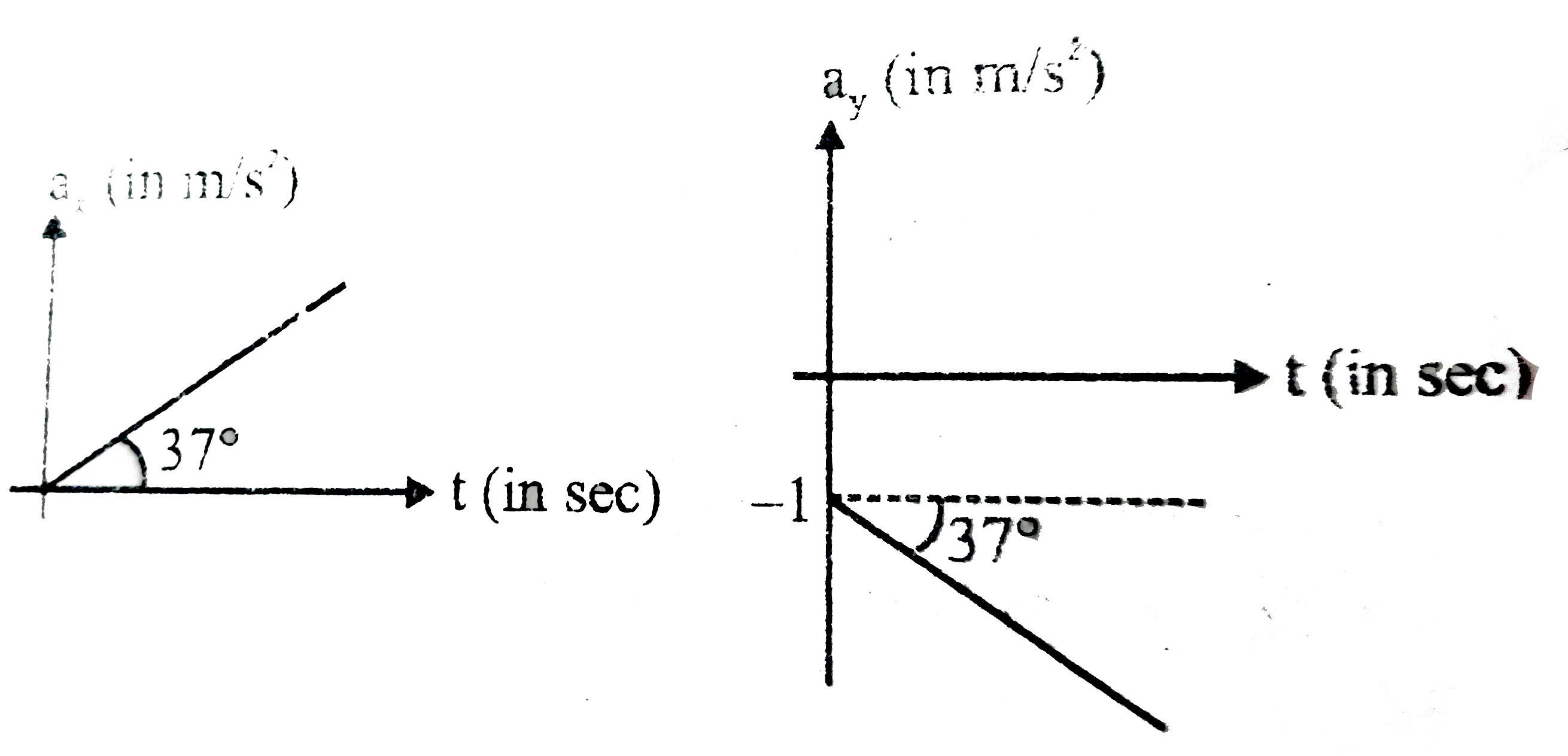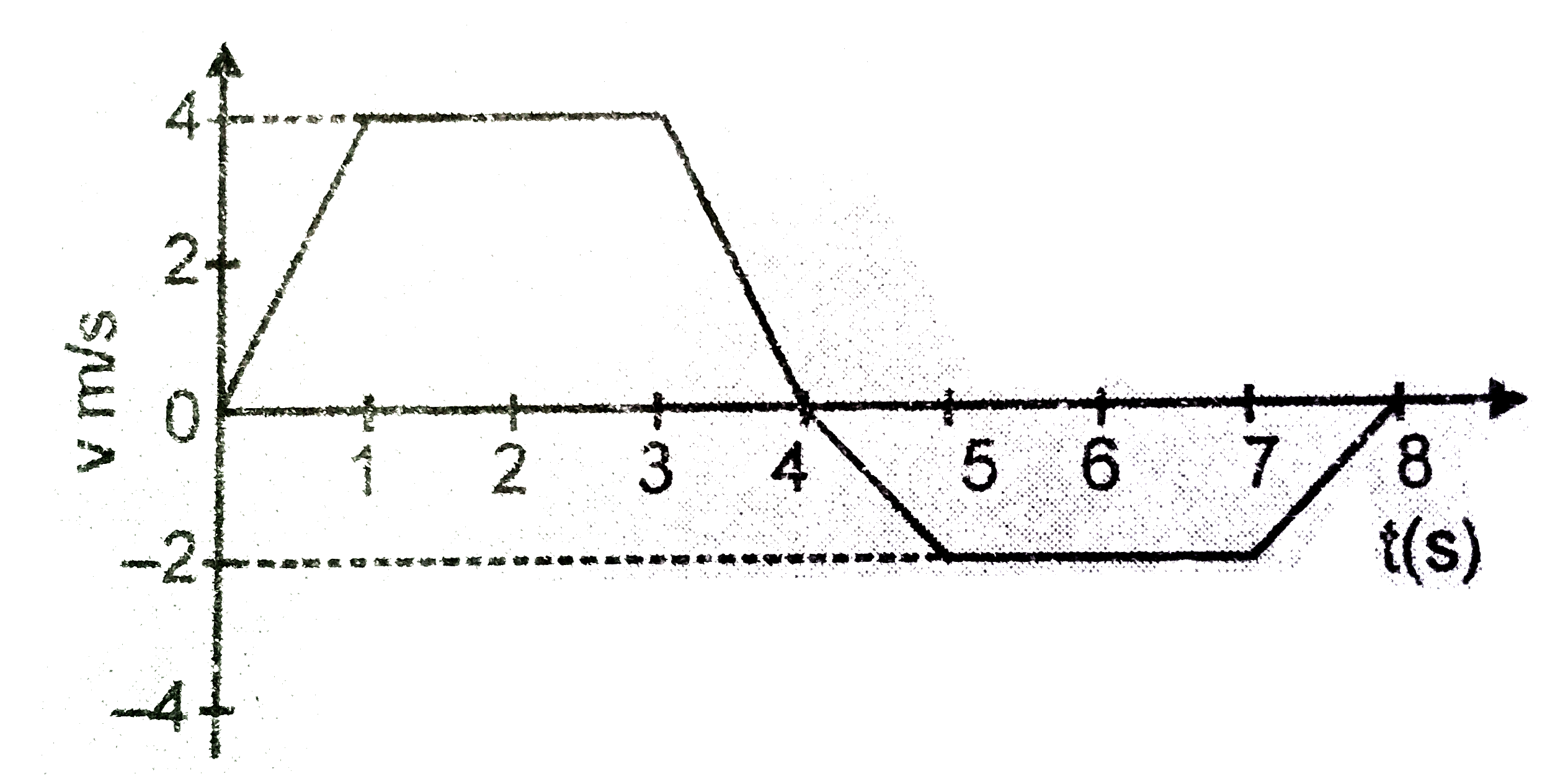The potential energy (in SI units) of a particle of mass 2kg in a conservative field is U=6x−8y. If the initial velocity of the particle is →u=−1.5ˆi+2ˆj, then find the total distance travelled by the particle in the first two seconds.
10m
12m
15m
18m
The correct Answer is:C
→v=−∂U∂xˆi−∂U∂yˆj=−[6ˆi]+[8]ˆj
=−6ˆi+8ˆj
∴→a=−3ˆi+4ˆj has same direction as that of →u=−3ˆi+4ˆj2=(→a2)
|→a|=5
|→u|=5/2
Since →u and →a are in same direction, particl will move along a straight line
∴S=52×2+12×5×22
=5+10=15m.15m.Ans
Topper's Solved these Questions
- BOOK - RESONANCECHAPTER - DAILY PRACTICE PROBLEMSEXERCISE - dpp 535videos
DAILY PRACTICE PROBLEMS
- BOOK - RESONANCECHAPTER - DAILY PRACTICE PROBLEMSEXERCISE - dpp 548videos
DAILY PRACTICE PROBLEMS
- BOOK - RESONANCECHAPTER - DAILY PRACTICE PROBLEMSEXERCISE - dpp 517videos
DAILY PRACTICE PROBLEMS
- BOOK - RESONANCECHAPTER - CURRENT ELECTRICITYEXERCISE - Exercise54videos
CURRENT ELECTRICITY
- BOOK - RESONANCECHAPTER - ELASTICITY AND VISCOCITYEXERCISE - Advanced Level Problems9videos
ELASTICITY AND VISCOCITY
Similar Questions
The potential energy of a particle under a conservative force is given by U(x)=(x2−3x) J. The equilibrium position of the particle is at
View SolutionA particle is moving under a constant acceleration of 3m/s2. The initial velocity of the particle is 10m/s. calculate the distance travelled by the particle is 5s and also in th 5th second of its motion.
View Solution
Knowledge Check
- Question 1 - Select One
The position of a particle along x-axis at time t is given by x=1+t−t2. The distance travelled by the particle in first 2 seconds is
A1 mB2 mC2.5 mD3 m - Question 2 - Select One
In the figure the variations of componets of acceleration of particles of mass 1kg is shown w.r.t. time. The initial velocity of the particle is →u=(−3ˆi+4ˆj)m/s. the total work done by the resultant force on the particles in time intervals from t=0 to t=4 seconds is :
 A22.5JB10 JC0DNone of these
A22.5JB10 JC0DNone of these - Question 3 - Select One or More
The potential energy of a particle of mass 1 kg in a conservative field is given as U=(3x2y2+6x) J, where x and y are measured in meter. Initially particle is at (1,1) & at rest then:
AInitial acceleration of particle is 6√5ms2BWork done to slowly bring the particle to origin is 9 JCWork done to slowly bring the particle to origin is −9 JDIf particle is left free it moves in straight line
A particle moves in a straight line from origin. Its velocity time curve is shown. Find the distance of particle at the =8sec. From the origin and the distance travelled by the particle during first 8 seconds.
 View Solution
View SolutionThe potential energy of a particle of mass 1 kg free to move along x-axis is given by U(x)=(x22−x) joule. If total mechanical energy of the particle is 2J then find the maximum speed of the particle. (Assuming only conservative force acts on particle)
View SolutionThe potential energy of a particle under a conservative force is given by U(x)=(x2−3x) J. The equilibrium position of the particle is at
View SolutionThe potential energy of a particle of mass 1 kg in a conservative field is given as U=(3x2y2+6x)J, where x and y are measured in meter. Initially particle is at (1, 1) & at rest, then incorrect statement is :
View SolutionThe potential energy in joules of a particle of mass 1 kg moving in a plane is given by U=3x+4y, the position coordinates of the point being x and y, measured in metres. If the particle is initially at rest at (6, 4), then:
View Solution

